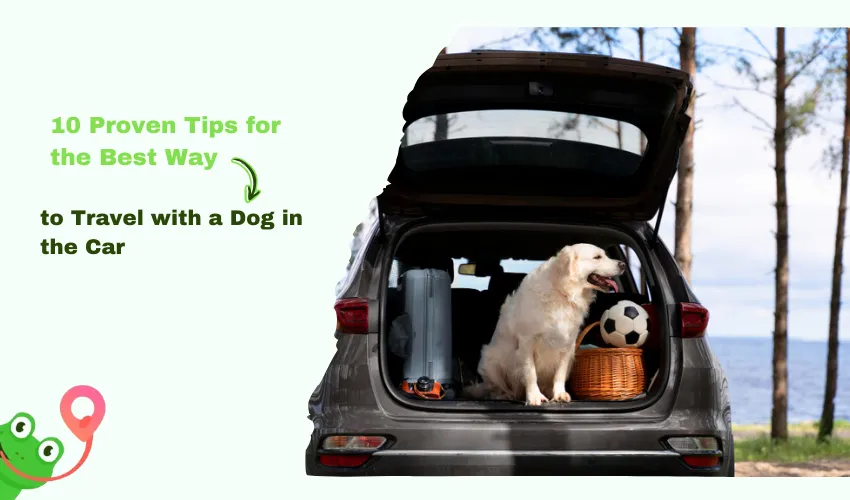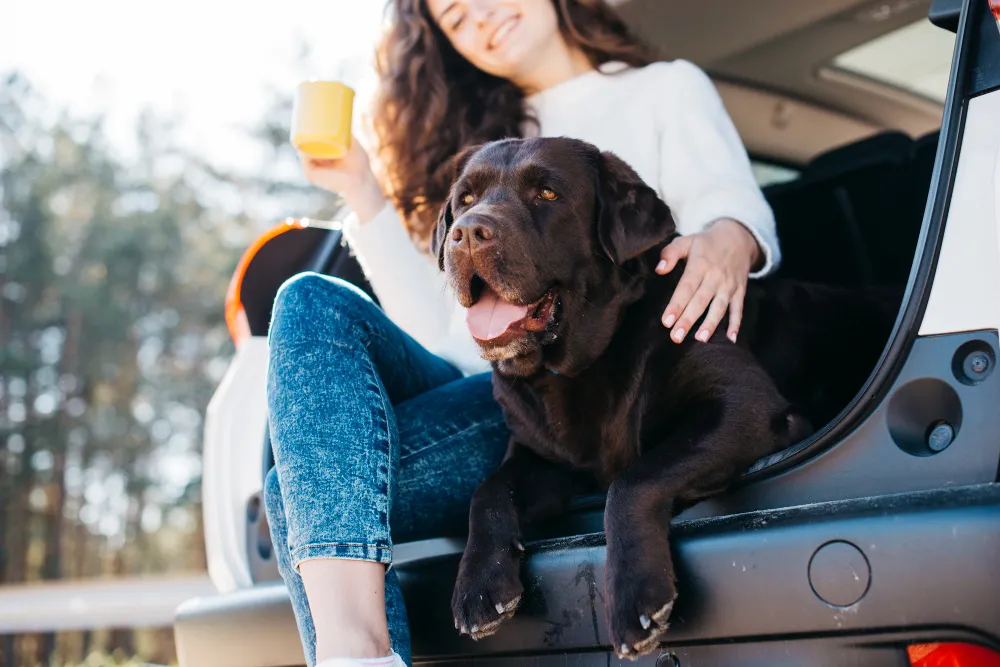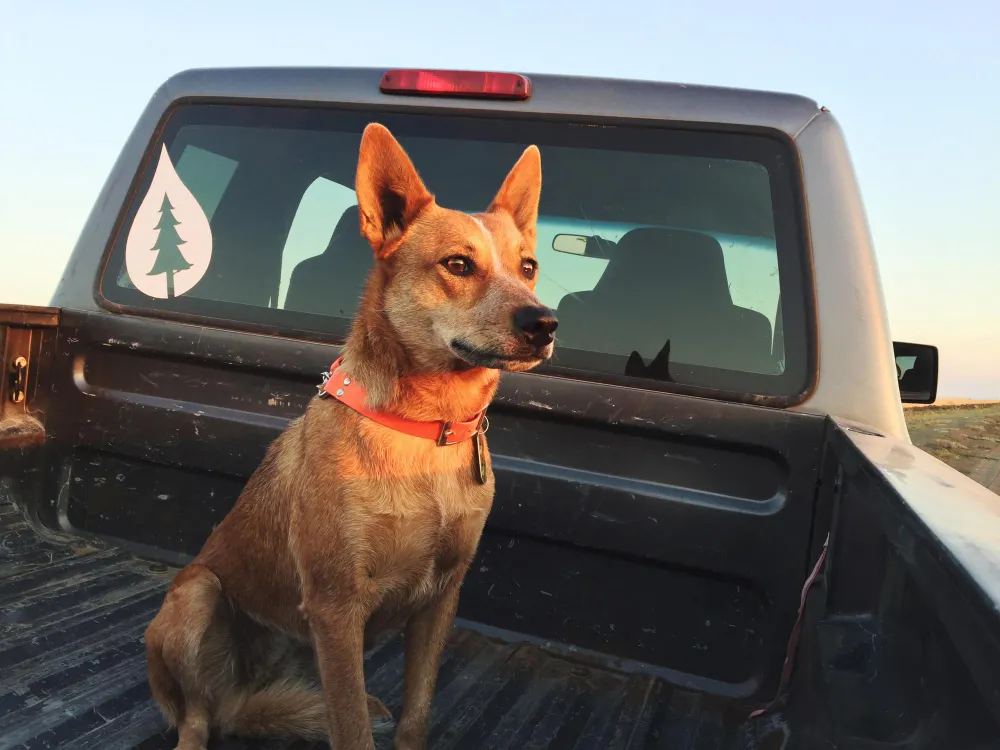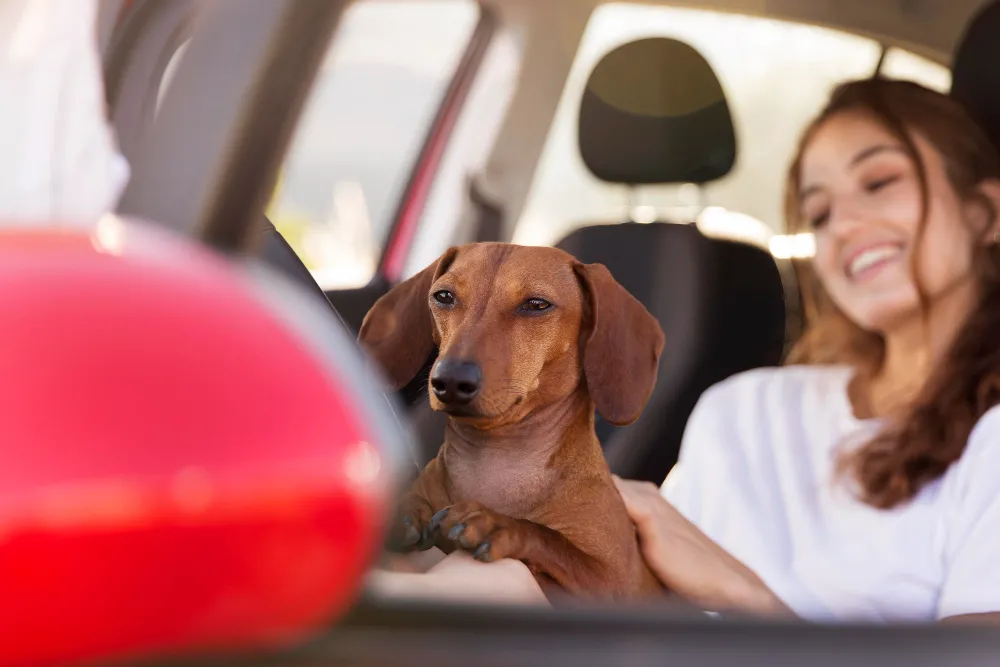10 Proven Tips for the Best Way to Travel with a Dog in the Car

The thought of taking a dog for a ride in a car could be a thrilling experience. However, it can also bring a lot of concerns and questions. Many pet owners worry about keeping their pets secure at all times and comfortable on a trip. There is good news: with some planning and the correct strategy, turning your car journey into a pleasurable adventure for you and your furry companion is possible. This guide will provide 10 proven techniques to show how to take your pet in a car. Each step is designed to assist you in preparing for, safeguarding, and treating your pet to ensure that each trip is a memorable experience. With these suggestions, you can drive confidently knowing your dog is safe, well-behaved, calm, and prepared to play.
Tip 1: Choose the Right Crate or Harness

Selecting the right crate leash is the first step to secure travel with your pet. A sturdy Dog Kennel prevents your pet from moving around too much and helps them stay safe during abrupt stops. Find a crate that has been crash-tested and is sized to your dog’s needs with enough room to turn, stand, and lie comfortably. If your dog doesn’t like the crates, a harness that has been crash-tested and is attached to the seat belt could be an option. The harness should fit snugly, and the straps should be adjusted to prevent chafing or pulling. If you use the harness or crate, put it securely on the rear seat or in the cargo space. In this way, the dog isn’t able to leap to the side of your car to keep you from your attention, and they are safe in the event of an accident.
Tip 2: Make a Pre-Trip Practice Run
Before embarking on a long drive, try a short run with your pet. These short runs can help your dog become accustomed to the sound and movement of the vehicle. Start by riding for 10 to 15 minutes, circling the block. Give treats and praise during the drive so your dog can learn that driving is an enjoyable experience. Gradually increase the duration of these practices over a couple of days or weeks. If your dog is showing symptoms of stress, for example, crying or vomiting, stop the exercise and offer your dog a peaceful mind. The car will be a familiar area, not an anxiety-inducing environment, as time passes. When you finally set off for your long trip, your pet will be more comfortable because they’ve discovered that driving can be fun.
Tip 3: Pack a Dog-Friendly Travel Kit
A travel kit for your dog will make stops less stressful and help you stay organized. Your pet’s kit should contain the collapsible bowl for water, waste bags, bottled water, and a leash. Bring a soft, fluffy towel or blanket with a scent from your home, and your dog’s favourite games to keep him busy. Pack doggy wipes to wipe muddy paws clean before returning to your vehicle. Keep everything in one bag so you can grab it easily whenever you need a break. The convenience of having all pet-related items together will reduce the possibility of omitting vital items. When you visit parks, rest areas, or other pet-friendly places, you can pull out the items you need without searching through multiple bags. It will ensure your dog is well-groomed, clean, and hydrated throughout your trip.
Tip 4: Secure Your Dog Before You Start

Before you begin the engine, ensure your pet is secured to the rear seat or cargo area. The free-roaming dog can irritate the driver, particularly if it leaps to the side of your vehicle or interferes with the driver’s view from the street. Always ensure your dog is securely secured with the harness or crate you’ve made. Examine the buckles and locks to ensure they’re secure and securely attached. If you have a security barrier made for hatchbacks and SUVs, put it in place to ensure your dog stays within the cargo area. The barrier provides an additional layer of protection, stopping your dog from advancing when you suddenly brake. Once your dog is secured, you can concentrate on driving and not worry about sudden movements or distractions.
Tip 5: Plan Frequent Comfort Breaks
Driving for long periods can cause dogs to become restless. It is therefore essential to schedule frequent relaxation breaks. Try to stop every two hours or when you feel uncomfortable, like whining or pacing. Take your dog for a walk at each break, move their legs, use the toilet, and drink a glass of fresh water. Take them for a walk on a leash, so they can get a chance to explore and let off the excess energy. Breaks are not only bathroom breaks. They can help reduce boredom and stiffness. If you are travelling with multiple dogs, schedule breaks during which each dog receives personal time with a pet. These intimate moments of care can soothe an anxious dog and help them feel comfortable and safe throughout the trip.
Tip 6: Keep Your Dog Entertained and Connected
A lack of interest on the road could cause whining, chewing, or other unwelcome behaviours. To keep the dog engaged, you can rotate the toys and give them treats to do during their journey. Chew toys and stuffed Kongs are excellent options to stimulate your dog’s brain. Apart from toys and other items, modern tools will aid you in staying organized and tracking your dog’s requirements. Platforms such as Pet Business Software are not only for professionals. They can also monitor feeding times and activity levels and even remind you of breaks on a road trip. By using technology to record your dog’s activities and habits, you can guarantee consistent treatment even when away from your home. The combination of connectivity and entertainment transforms an extended journey into a fun experience for your pet.
Tip 7: Maintain the Ideal Cabin Temperature
Dogs cannot be as efficient in cooling themselves as humans, so maintaining the cabin at the correct temperature is essential. On hot days, switch the air conditioner to a comfortable level and ensure enough airflow. Make the windows slightly open to let fresh air circulate, without creating drafts that can be uncomfortable for your pet. When it is colder, you should avoid blowing up the heater. Instead, you should set the temperature to a comfortable level. Don’t leave your dog in the parked car, even temporarily. In a car, temperatures fluctuate rapidly, putting your pet at risk of hypothermia or heatstroke. Making sure your dog is comfortable by having regular temperature control will help them relax and enjoy the ride just as you can.
Tip 8: Use Calming Aids When Needed

Certain dogs are anxious or feel motion sickness when they go on journeys in the car. If your dog is showing symptoms of stress, for example, shaking, drooling, and excessive panting, then it might be beneficial to try calming medications. Check with your veterinarian before using any of the products. They could suggest natural remedies like pheromone sprays. These simulate the dog’s natural calming scents. Another alternative is a pressure-wrap or vest that applies incredibly gentle pressure to the dog’s back and creates a soothing feel similar to hugging. The vet might suggest chewable, vet-approved calming treats for dogs susceptible to getting sick in the car. Using these treats only as needed will ensure your dog is as calm as possible without using medications regularly.
Tip 9: Feed and Hydrate Strategically
The proper feeding and hydration of your dog can help prevent the effects of dehydration and car sickness. Do not feed your dog a huge meal just before you leave. Instead, please give them a small meal 30 to 45 minutes before your departure. It reduces the likelihood of stomach issues and gives your dog energy to enjoy the journey. Take bottled water with your dog and give tiny amounts at each break. A collapsible bowl is ideal for providing the proper amount of water with no spills, and it’s a breeze. It is easy to get dehydrated quickly, particularly in warm conditions or long journeys. By regulating water and food consumption carefully, you will ensure your dog feels at its best from beginning to end.
Tip 10: Prepare for Emergencies
Whatever you prepare, accidents could occur in the middle of the road. Pack an essential first-aid kit for your dog, comprising bandages, wipes for antiseptics, tweezers to get rid of splinters, and any medications your dog uses regularly. Keep your veterinarian’s contact number stored on your phone and the addresses of 24-hour veterinarians in the area you travel to. A list of emergency contact numbers and medical information could be helpful if your phone’s battery goes out. Keep your dog’s vaccinations and medical documents in a waterproof folder. It will ensure you can react quickly and confidently if your dog suffers a cut, bites into something they shouldn’t, or gets sick.
Conclusion
Driving around in a car with your dog could be a thrilling journey with adventures shared and joyful memories. When you select the right equipment, experiment with short drives, pack a thoughtful travel kit, and ensure you take frequent breaks, you can set the foundation for success. Engaging your dog at all times, relaxed and in touch, ensures that the hours in the car fly by. Maintaining a steady temperature in the cabin, using calming products appropriately, and planning meals carefully will ensure your dog’s health from multiple angles. Also, having an organized emergency plan with supplies will give peace of mind during an emergency. Adhering to these ten tested tips will teach you to take your dog in the car. It turns the once uncomfortable experience into an experience you and your pet love.




